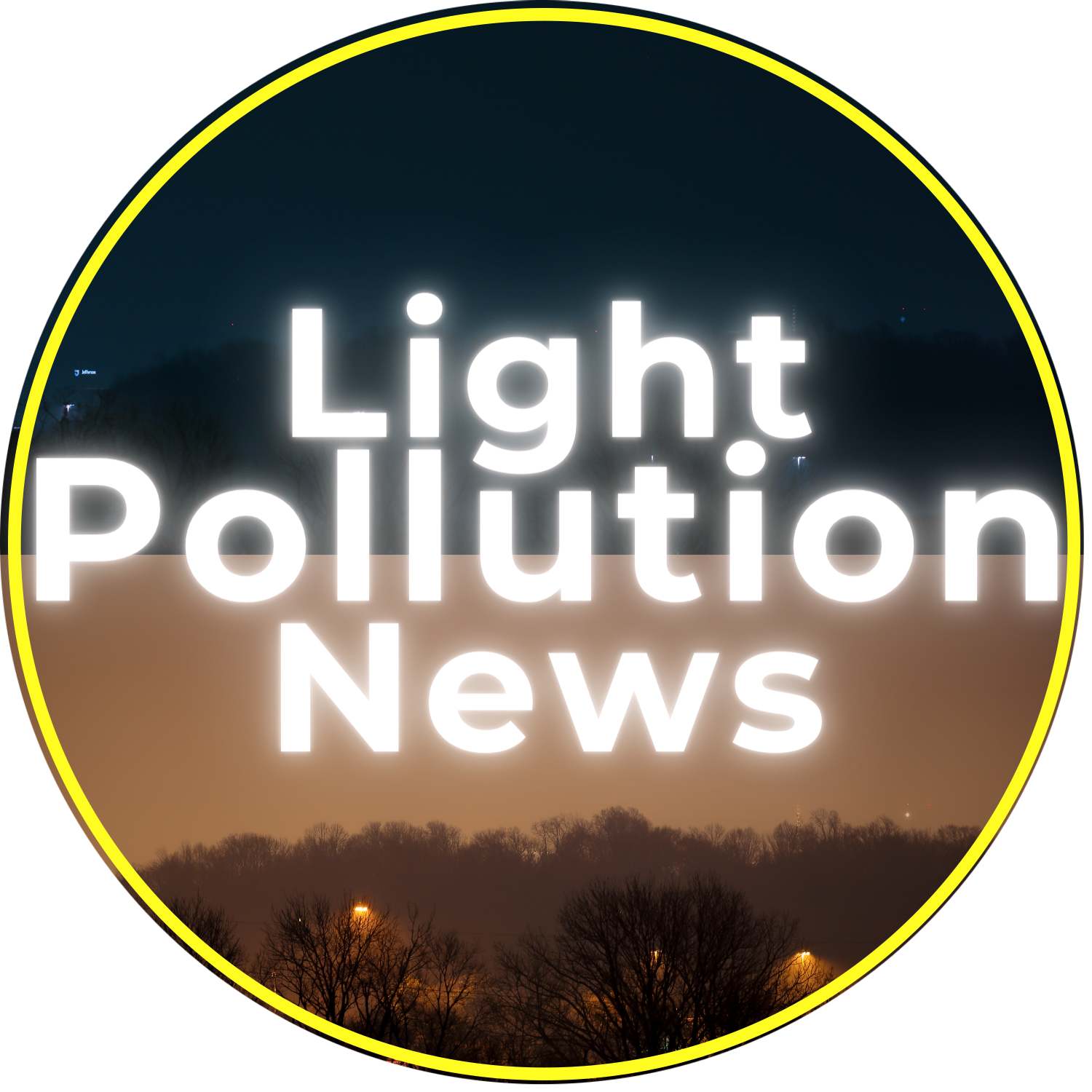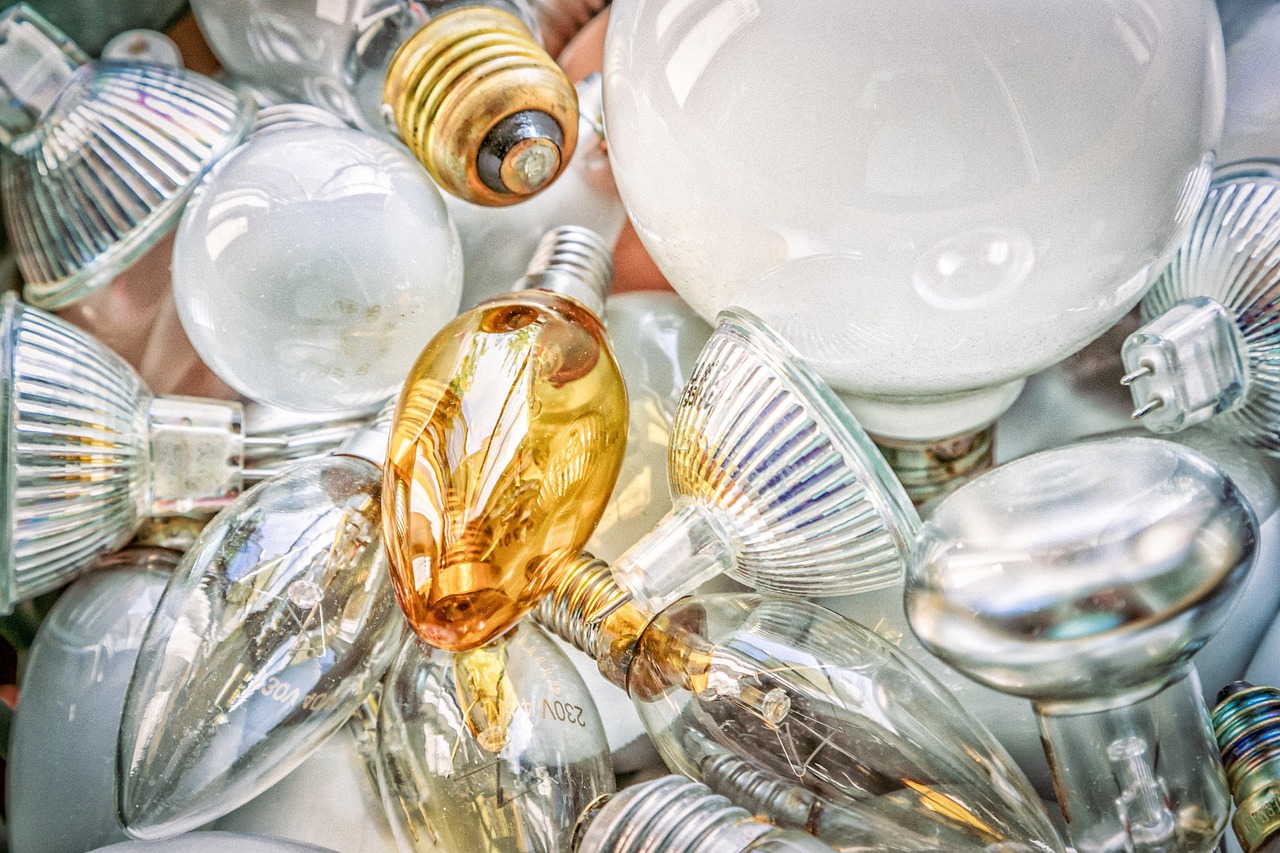How many lumens you need for your outdoor lighting will depend on the type of lighting that you are using and the area that you want to illuminate. This will range from 12-800 lumens depending on the purpose of the light.
We will cover the different types of lighting below and how much light should be used for your outdoor lights. First, some lighting basics.
What is a Lumen?
A lumen is a unit of measure of brightness. The higher the number, the brighter the light. Most people are familiar with watts when talking about the brightness of lights.
Before the invention of the LED light, most people used incandescent bulbs, and the energy output of these bulbs was measured in watts.
The incandescent light is not very efficient when it comes to light output. Only 10% of the amount of energy used by an incandescent bulb goes towards producing light, the rest ends up producing heat. Not only is it not energy efficient, but it is also a safety hazard.
Increases in lighting technology have brought us LED lights which can produce more light while using less energy. So when you are looking at the brightness of light bulbs, watts are no longer the best indicator, it is now lumens.
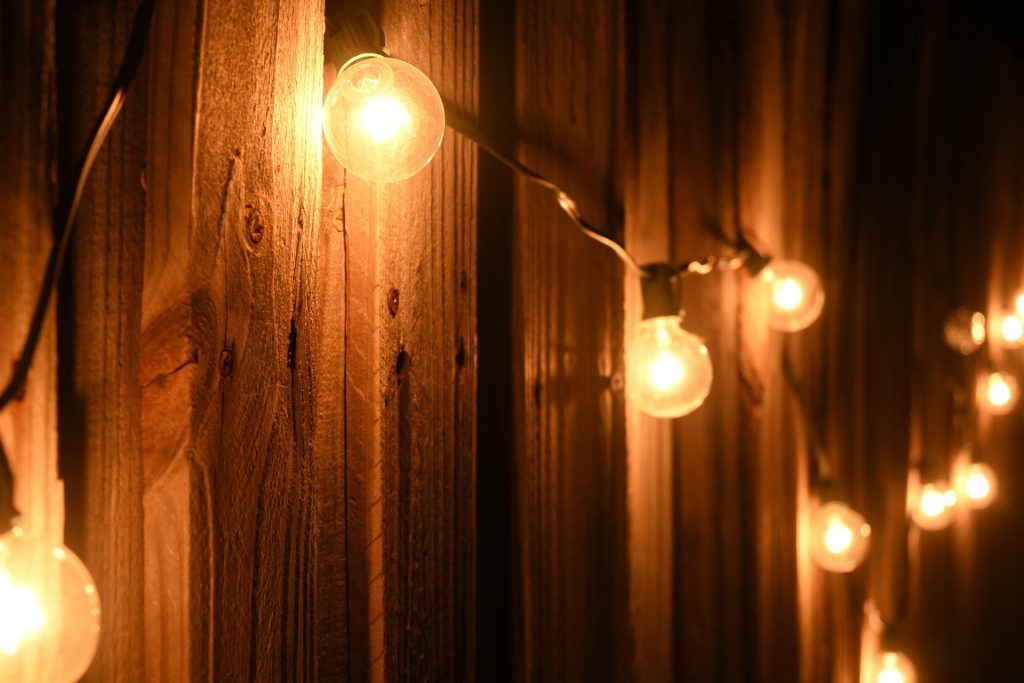
Lumens Needed for Your Outdoor Space
As we mentioned earlier, the amount of lumens needed will depend on the application. We recommend going on the lower end when possible, this will not only save on energy costs, but it will help to decrease your contribution to light pollution.
You can also add additional lights, or go with a brighter light bulb if you find you need a brighter light for your outdoor lighting.
Lumens Needed for Pathway Lights
Industry professionals recommend 100-200 lumens for path lights. The amount of light needed is generally fairly low as you are only looking to illuminate areas along the ground. For your path lighting needs, there are a few types of lights to be aware of.
There are solar lights that are quick and easy to install, and then there are low voltage lights, which require some more work during installation, but greatly increases the number of options available.
For some great ideas for path lights, check out our article on outdoor lighting ideas.
Lumens Needed for Landscape and Garden Lights
Lighting professionals recommend 50-300 lumens for landscape and garden lights depending on how the light is being used. You can use lower lumens when the lights are decorative lights but can use a greater number of lumens in an area that is a safety concern such as a stairway.
Lumens Needed for Patio Lighting
For patio lighting, it is recommended to use 30-200 lumens depending on what atmosphere you are looking for. String lights are a popular form of patio lights and string lights have relatively low lumens which are great for creating a cozy environment for relaxing outdoors.
In a patio setting, bright lights are generally not needed and don’t create the most welcoming environment, and fewer lumens can be used.
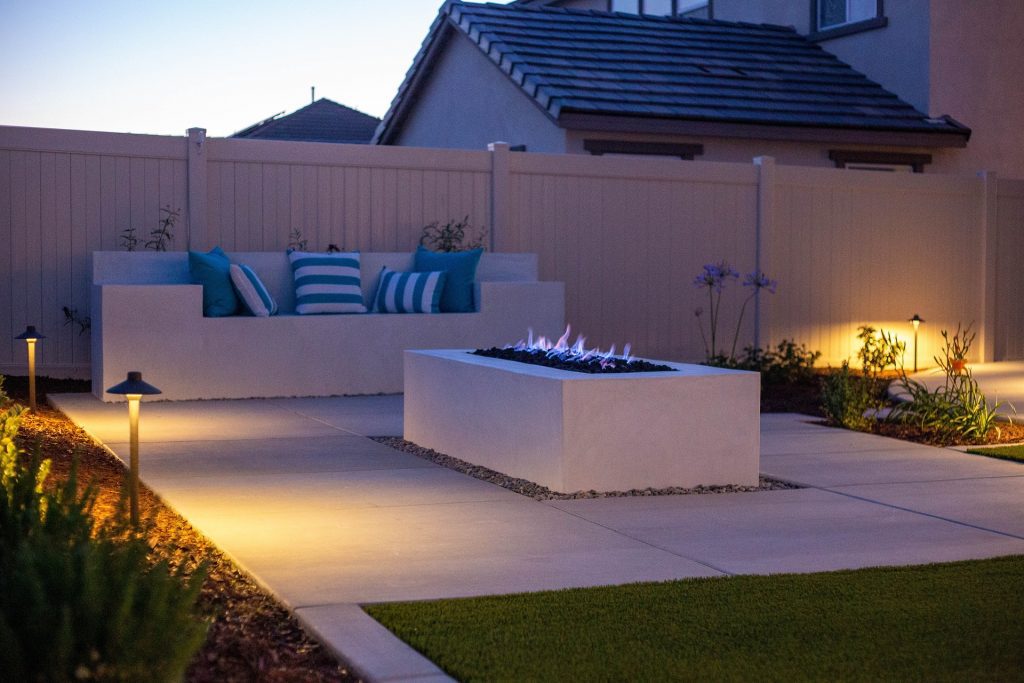
Lumens Needed for Motion Sensor Lights
Lighting professionals recommend using 300-700 lumens for motion sensor lights. These are lights generally placed on a garage or by a front door to illuminate an area when motion is detected.
This type of exterior lighting can be used for security reasons or to safely navigate areas when you are entering or leaving the house, but don’t need constant illumination.
Lumens Needed for Flood Lights
Industry professionals recommend using 700-1300 lumens for flood lights. An outdoor floodlight is generally used for security purposes and this is why higher lumens are used.
Flood lights have a higher intensity light than the regular motion sensor lights mentioned above. We recommend using outdoor security lights that have motion sensors so that the lights will only turn on when needed.
All security lights should be aimed directly down, should be shielded, and should be motion sensor lights. A shielded light is a light fixture designed so that you do not see the light source.
Not only will this decrease your contribution to light pollution, but it will also increase your safety by improving visibility in the lighted areas.
Additional Lighting Considerations
Color Temperature
The color temperature of your outdoor lights is also something to take into consideration. Light temperature is measured in Kelvin and is referred to as warmer or cooler light.
Warmer light is lower on the Kelvin scale, and cooler light is higher on the Kelvin scale. A good rule of thumb is the lower the number, the warmer the color.
For most of your outdoor lighting, you will want a warmer color light as this will provide a nice atmosphere for your outdoor activities.
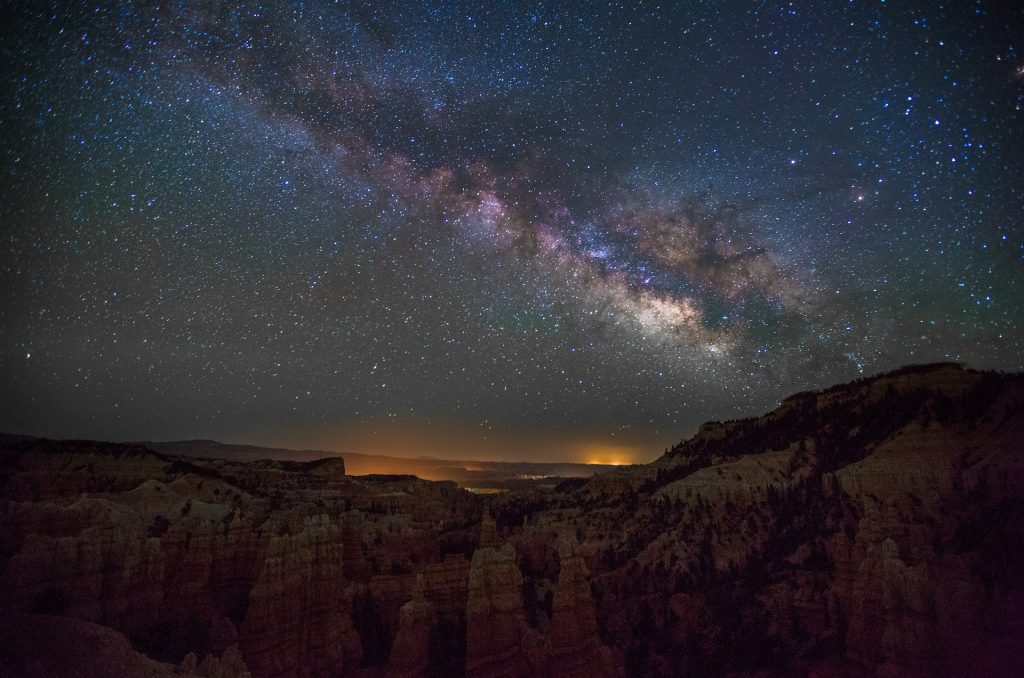
Dark Sky Friendly Lighting
We highly recommend choosing outdoor lighting fixtures that are dark sky friendly. What does it mean to have dark sky friendly lighting? When you look at the light fixture, you should not be able to see the source of the light (light bulb). This is considered a shielded light.
The important things to consider for dark sky friendly lighting are using lighting only when and where it’s needed, using properly shielded light fixtures, and using outdoor lights with motion sensors or timers to limit the amount of time a light is in use.
Following these guidelines not only decreases your contribution to light pollution but provides a more welcoming environment for enjoying your outdoor spaces.
We understand that people like to use outdoor lights, whether for aesthetic effects, entertaining, or security, and we want to help people make informed decisions about the lights being used.
You can use outdoor lights at night while still being a friend to the starry sky movement and decreasing your contribution to light pollution!
For more information about light pollution check out our article What is Light Pollution?
To stay up to date on all things light pollution related, check out and subscribe to our podcast. We have a new episode every month bringing you the latest news and research about light pollution.

